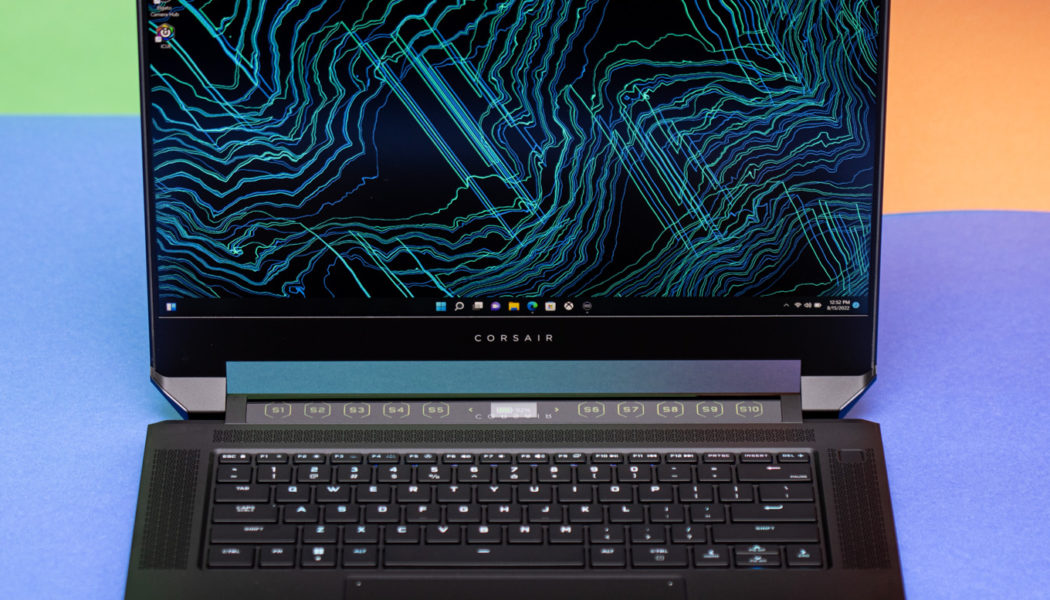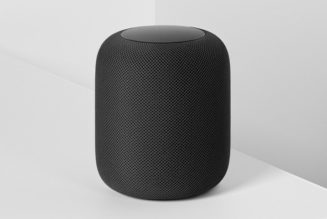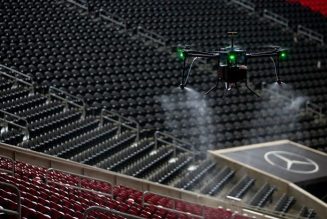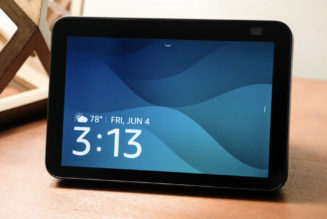Corsair makes a lot of things that PC gamers need: RAM, storage, mice and keyboards, headsets, and more. The company also owns Elgato, the brand behind the Stream Deck command center. And now, perhaps inevitably, it makes a laptop: the Voyager A1600. Corsair whipped up the design in-house, and it’s packed with Corsair parts and features: Corsair RAM and solid-state drives, iCue support to sync your RGB LED effects across Corsair accessories, and a built-in low-latency Slipstream receiver inside that pairs with Corsair gaming mice, keyboards, and headsets. Oh, and it has a built-in Stream Deck. Kind of.
While I’m impressed that Corsair managed to fit so much into an elegantly designed gaming laptop, it doesn’t perform at the level that I expect of a machine that costs $2,999.99, as reviewed (it starts at $2,699.99, with a slightly slower CPU, 16GB of RAM instead of 32GB, and a 1TB SSD instead of 2TB). It will be powerful enough for most people, but compared to similarly priced gaming laptops with Nvidia GPUs, as well as some cheaper ones, this model’s Ryzen 9 6900HS CPU and Radeon RX 6800M GPU, as tested, aren’t well-suited for the most demanding games, especially when you pile on intense ray tracing effects or when performing creator-focused tasks like exporting video projects in Adobe Premiere Pro.
Not to mention, the Stream Deck touch bar — perhaps its standout feature — is sometimes buggy, and while the Stream Deck software is as good as ever, the 10 touch-sensitive buttons offer no feedback, and their icons don’t change to reflect what you’ve customized them to execute. It’s a bummer, especially since the six-button Stream Deck Mini starts at just $80. That disappointment extends to its webcam and speaker quality, too. You’ll get better results by accessorizing piecemeal. I know. The same can be said for many gaming laptops. But it doesn’t wear well for a laptop that costs $2,699 to start and is kind of marketed as being the all-in-one machine to save you from having to buy so many extra accessories.
How The Verge reviews and scores products
Even if Corsair didn’t nail all of the major beats, there’s still a lot to admire in the Voyager A1600. There’s a tiny screen in the middle of the array of S-Keys that can be customized to show the current CPU stress level, the time and date, or the battery level. It’s hardly vital, but it’s cute. It’d be nice if it could show what the S-Keys are doing when you press them since their icons don’t change, but maybe that’ll come.
The 1080p webcam has a sliding privacy cover and supports Windows Hello for face authentication. The video can be thoroughly customized with Elgato Camera Hub software (the same app that Elgato’s Facecam webcam uses), which offers more settings than any integrated laptop webcam that I’ve tried. Sadly, the video quality is grainy and under-exposed to the point that I recommend getting a standalone webcam if you care at all about how you look, say, during game streams or Zoom calls. I suppose Corsair deserves some credit for including one at all, considering some Asus gaming laptops don’t.
:no_upscale()/cdn.vox-cdn.com/uploads/chorus_asset/file/23950752/akrales_220815_226109_0096.jpg)
:no_upscale()/cdn.vox-cdn.com/uploads/chorus_asset/file/23950749/akrales_220815_226109_0069.jpg)
This laptop’s design is a gamer-y twist on Razer’s serious, retro MacBook Pro-a-like Blade chassis, with more sharp, jutting angles. Corsair’s all-black aluminum design looks sophisticated and relatively understated, with customizable RGB LEDs illuminating both the keyboard and the array of S-Keys up top. Take a moment to appreciate the look before you start using it. It’s all too easy to coat it in fingerprints and all too difficult to get them off.
The keyboard is great. Corsair uses Cherry’s ultra-low-profile mechanical key switches, which arrived first in some Alienware laptops in early 2021. The ones used in the A1600 are tactile, not clicky, and feel satisfying to type on; I was able to quickly ease into the key layout and spacing. Speaker grilles hug the keyboard, and the Voyager A1600’s power button has an integrated fingerprint reader to use for Windows Hello authentication.
:no_upscale()/cdn.vox-cdn.com/uploads/chorus_asset/file/23950748/akrales_220815_226109_0053.jpg)
The Voyager A1600’s speakers support Dolby Atmos, but with or without the audio effect enabled, these sound like most other gaming laptop speakers. They work well in a pinch for video calls or podcasts, but they lack bass delivery, and the spatial audio effect wasn’t noticeable. The Windows gaming laptop to beat for speaker quality is the Asus ROG Strix G17. For this one, I suggest either plugging in some wired headphones or using a gaming headset.
There’s no such thing as too much trackpad, and this one is gargantuan. At 6 and ⅛ x 4 inches (L x H), it’s close in size to the one on the 16-inch MacBook Pro. Fortunately, it has palm rejection and the full range of Windows Precision gestures. It hides two features in its corners that some people other than myself may find useful: double-tap the top right corner to deactivate its right half, double-tap the left top corner to deactivate the whole pad.
:no_upscale()/cdn.vox-cdn.com/uploads/chorus_asset/file/23950751/akrales_220815_226109_0085.jpg)
There’s a lot that I like about this laptop’s 16-inch display, aside from the chunky bezels surrounding its top and bottom ends. It has a 16:10 aspect ratio (2,560 x 1,600 resolution), making it just a bit taller than the 16:9 ratio still used on a majority of gaming laptops. That’s great for productivity, but not every game supports this resolution, and since most modern TV shows and movies are shot in 16:9, you’ll encounter letterboxing at some point.
The display has a fast 240Hz refresh rate, a 3ms response time, and AMD FreeSync adaptive sync support to ensure that games don’t exhibit screen tearing. Corsair claims that this factory-calibrated display supports 100 percent of the sRGB color gamut (which I confirmed with a Spyder colorimeter), with a too-good-to-be-true peak brightness of 625 nits (which I couldn’t replicate). The peak brightness that I measured was just 359 nits. That’s still a good result for a gaming laptop, but I’m not sure how Corsair got that 625-nit figure.
The Voyager A1600 has a varied selection of ports, though it’s missing a few crucial ones. On the left, you get a 3.5mm headphone jack, a power plug for its 230W adapter, and two fast USB4 Type-C ports (these sport Thunderbolt 3 functionality). On the right, one USB-C 3.2 Gen 2 (10Gbps) port, one USB-A 3.2 Gen 1 (5Gbps), and a full-size SD card slot. Corsair’s senior public relations specialist Justin Ocbina told The Verge that the two USB-C ports on the left are tied to the CPU, while the one on the right side of the laptop will tap the dedicated GPU. Ocbina said there’s a compatibility issue with connecting to some 4K displays, but AMD’s upcoming driver update, which will arrive shortly via Windows Update, should fix it. Moving on, Corsair built one of its Slipstream low-latency wireless dongles inside of the laptop to save you from using a USB port if you have any of the headsets, mice, or keyboards mentioned on this page. For a laptop this expensive, HDMI and Ethernet ports would have been welcome.
:no_upscale()/cdn.vox-cdn.com/uploads/chorus_asset/file/23950755/akrales_220815_226109_0118.jpg)
:no_upscale()/cdn.vox-cdn.com/uploads/chorus_asset/file/23950756/akrales_220815_226109_0122.jpg)
There are so many software features built into this laptop that it’s almost a problem. Corsair includes a hub that pops open upon first use to point you in the right direction. There’s iCue, Corsair’s software that gives you the keys to customizing a ton of stuff, like the keyboard’s backlighting, what kind of info you’ll see on the small rectangular screen near the S-Keys, and helping you upgrade the firmware for these various components. It’s also where you can pair compatible accessories to its Slipstream wireless receiver.
If you want to actually customize what each of the touch-sensitive S-Keys does, you’ll need to open the Stream Deck software, where you can drag and drop commands onto each key. Like when using an actual Stream Deck, you can toggle between multiple S-Key profiles with a button press, allowing you to page through several configurations of commands.
You can use these S-Key buttons for more practical shortcuts, too, like playing a sound effect or capturing some gaming footage. That’s just the start of the rabbit hole. You can download numerous plug-ins that let the Stream Deck have fine-tuned control in apps like Zoom, Discord, Spotify, and more. It’s the most useful touch bar on a laptop by far, hindered by the fact that, unlike the Stream Deck, this laptop’s S-Keys can’t swap icons to make it easier to tell what they do. If you’re like me, you’ll just have to fail repeatedly until you memorize your layout.
Then, there’s the AMD Adrenalin software, which is used to toggle graphical settings, monitor performance metrics, and distribute driver updates. The app needs a lot of work, especially because it doesn’t effectively communicate when SmartShift Graphics or SmartShift Memory — AMD’s signature feature that allocates resources from component to component to boost performance — is working. It’s too difficult to know whether you’re squeezing the most oomph out of a computer with this software or missing some secret setting that’s hiding some extra performance, and that’s a problem.
:no_upscale()/cdn.vox-cdn.com/uploads/chorus_asset/file/23950757/akrales_220815_226109_0158.jpg)
In terms of gaming performance, the Voyager A1600 offers enough grunt to provide smooth 60-plus frames per second (FPS) at its 16-inch display’s native resolution in demanding open-world games like Red Dead Redemption 2 and Horizon Zero Dawn. In more limited cases, it can run some AAA games on high settings at over 100 FPS, including the Resident Evil 3 remake. I particularly enjoyed playing Neon White. While not a system punisher by a long shot, it ran at almost 200 frames per second and looked fantastic on the high refresh rate display.
Shifting over to a more punishing title, Cyberpunk 2077, this laptop struggled to achieve 60 frames per second on high graphical settings, without ray tracing, at native resolution. With ray tracing switched on, even the less system-intensive enclosed environments ran at an unplayable sub-20 frames per second. That pales in comparison to my experience with ray tracing in Resident Evil 3, which could run ray tracing settings at a somewhat smooth 55 frames per second. If ray tracing is important to you, you’re better off with a gaming laptop that uses an Nvidia GPU, like the Lenovo Legion 5 Pro; Nvidia cards have dedicated ray-tracing cores that AMD lacks.
I tested two open-world games, Red Dead Redemption 2 and Horizon Zero Dawn, and each title ran between 65 and 80 frames per second, depending on the environment. That’s good performance, but these are each fairly old console ports. Some titles are eligible for a small frame rate bump if they support FidelityFX Super Resolution (FSR), which is AMD’s take on Nvidia’s DLSS that aims to turn small visual downgrades into performance gains. That setting was in Horizon and Resident Evil 3, which each saw about a 20 FPS improvement, depending on the scene. Although, compared to DLSS, the visual artifacts created by the performance-boosting effect were a little too noticeable. In RE3 specifically, I noticed ghosting in animations and distracting aliasing around edges.
Gaming laptops put out serious heat, and the Voyager A1600 gets toasty on its underside, to the point that I’d be uncomfortable hosting it on my lap. A thermometer measured 105 degrees Fahrenheit on the left and right bottom sides, where my legs would be. Also, in and out of games in balanced or extreme cooling and power modes, there were very few instances when its fans weren’t audible. Their volume was nothing I hadn’t heard before, though, like some other thin laptops that I’ve tested, its fans whir at a higher-pitched noise than those in bigger laptops.
:no_upscale()/cdn.vox-cdn.com/uploads/chorus_asset/file/23950758/akrales_220815_226109_0176.jpg)
The Voyager A1600 had no issue running my usual work apps, including a dozen Edge browser tabs, Slack, and Spotify. More intensive apps like Affinity Photo and OBS are also no big deal for this hardware. All of that comes with the caveat that sometimes a combination of apps, the S-Keys, and the tiny display near the keyboard lock up for seemingly no reason, only for any command you previously made to happen all at once. Opening the Task Manager within Windows revealed no bottlenecking in the hardware, so this just seems like a bug.
I wouldn’t recommend this model — or any laptop with an AMD GPU — if you need to quickly render videos on Adobe Premiere Pro. In our export rendering test, a five-minute, 33-second 4K video took anywhere from four minutes 10 seconds to seven minutes. Based on the inconsistency, I wouldn’t put my trust in this product if I were a professional video editor on a deadline. This $1,999 (and sometimes cheaper) Lenovo Legion 5 Pro can run through this test in about two and a half minutes, and that’s just one of many examples. Like ray tracing, this is another area where otherwise-competitive AMD GPUs don’t match up to their Nvidia equivalents. Both GPU types can tap into graphics acceleration techniques in Premiere Pro, though, in our testing, Nvidia’s CUDA technique is markedly faster than OpenCL, which AMD uses. That so-so exporting performance was reflected in the Puget benchmark, which output a midrange score of 526.
Battery life is passable for the Voyager A1600, despite AMD’s reputation for bringing long-lasting performance to power-hungry gaming laptops. Without the slim yet still a little bulky 230W wall charger plugged in, it lasted for about four hours while running non-intensive apps with brightness set to medium. That’s with AMD’s optional SmartShift Eco mode switched on, ensuring that its Ryzen 9 CPU’s integrated graphics were in charge of powering the display and apps, not the more powerful RX 6800M. That’s poor compared to Monica Chin’s experience with another AMD Advantage gaming laptop, the Asus ROG Strix G15 Advantage, which delivered over nine hours on a charge. Although, it’s not exactly apples to apples because this laptop has a more power-hungry QHD display, while that one had a 1080p display.
Recharging the laptop to full takes a little over an hour with the stock charger. It supports up to 100W charging via its USB-C ports, and unsurprisingly, it charges much slower this way. Still, it’s great to have it as an option if you simply want to use the laptop for browsing at the airport or a cafe, but keep in mind that in most cases, the laptop won’t be able to charge and play games simultaneously while charging via USB-C. That’s not to say that it’s completely incapable, in case you decide to game. While connected to the Plugable USB-C docking station that supplies 100W, I was getting a respectable average of 45 frames per second in Neon White. To run Elden Ring at 30 frames per second, I had to knock down the resolution and turn all of the settings to low. At least the battery percentage didn’t drop while charging and gaming.
:no_upscale()/cdn.vox-cdn.com/uploads/chorus_asset/file/23950753/akrales_220815_226109_0107.jpg)
:no_upscale()/cdn.vox-cdn.com/uploads/chorus_asset/file/23950754/akrales_220815_226109_0114.jpg)
After using the Voyager A1600 for over a week, I was surprised that its surplus of features didn’t really improve or streamline my work or play. While they’re impressive on paper and certainly pretty fun to show off to people seeing it for the first time, the Stream Deck functionality, the tiny rectangular screen near the keyboard, and all of the other software flourishes and conveniences don’t feel totally worth the premium that Corsair is charging. That sentiment extends to performance, too: it’d be more acceptable in a machine selling for around $2,000. Our buying guide for the best gaming laptops has a host of options that will give you more for your money.
Still, this is an endearing laptop for the company’s first attempt at making one. I’d appreciate having the option to have an Nvidia GPU since AMD GPUs still can’t compete when it comes to handling ray tracing or demanding creator-focused tasks. Thankfully, its design doesn’t need drastic improvements to level up, just more ports, better speakers, and more power — even if it comes at the cost of a few extra millimeters of thickness. It’s easy to see how Corsair could turn this into an excellent second-generation laptop.









